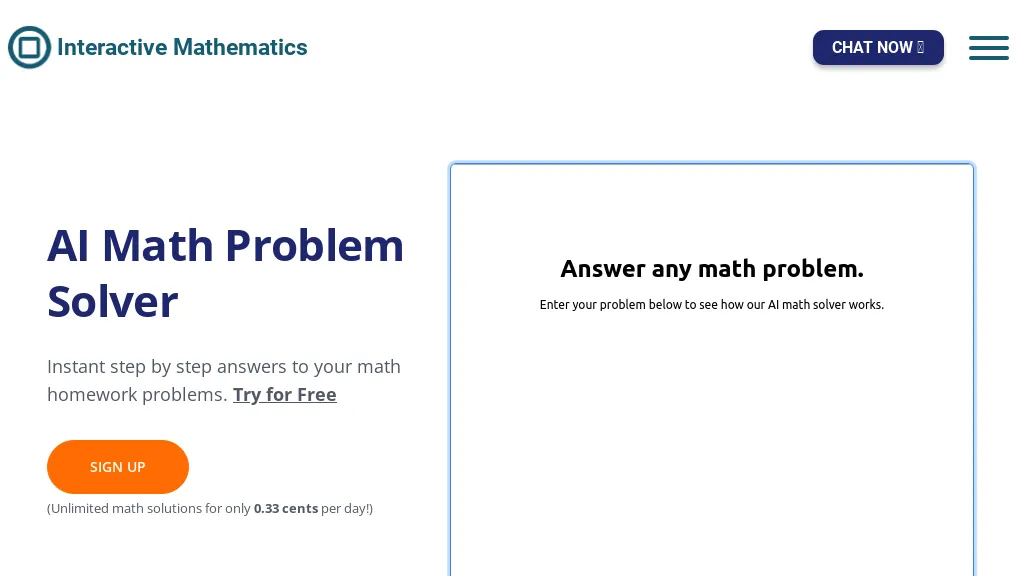
Visit Interactive Mathematics Website
What is Interactive Mathematics, pros and cons, use cases
Interactive Mathematics refers to a teaching approach that actively engages students in the learning process through hands-on activities and real-world applications. It focuses not only on the acquisition of mathematical concepts but also on developing mathematical reasoning skills and problem-solving abilities.
One of the main advantages of Interactive Mathematics is that it promotes a deeper understanding of mathematical concepts by providing students with opportunities to explore and manipulate mathematical ideas. By using interactive materials and technology, students can visualize abstract concepts and make connections between mathematical ideas and their applications in real-world scenarios. This approach enhances comprehension and retention of knowledge.
Another advantage of Interactive Mathematics is that it encourages active learning and student engagement. Instead of passively listening to lectures or watching demonstrations, students are actively involved in the learning process. They can experiment, ask questions, and collaborate with peers, fostering a deeper understanding of the subject matter.
However, there are also some potential drawbacks to Interactive Mathematics. It requires access to technology and interactive materials, which may not be available in all educational settings. Additionally, implementing an interactive learning environment requires trained educators who can effectively integrate technology and teaching methods.
Interactive Mathematics can be applied in various educational settings, from elementary to college-level mathematics education. For example, the Interactive Mathematics Program (IMP) curriculum has been successfully implemented in schools nationwide. It emphasizes mathematical reasoning, problem-solving, and the use of real-world scenarios to enhance students’ understanding of mathematics.
In conclusion, Interactive Mathematics is a teaching approach that promotes active learning, mathematical reasoning, and problem-solving skills through the use of hands-on activities and technology. While it has advantages such as enhancing comprehension and student engagement, it also requires access to resources and trained educators. Nonetheless, Interactive Mathematics shows promise in providing an effective learning experience and preparing students for real-world math applications.




